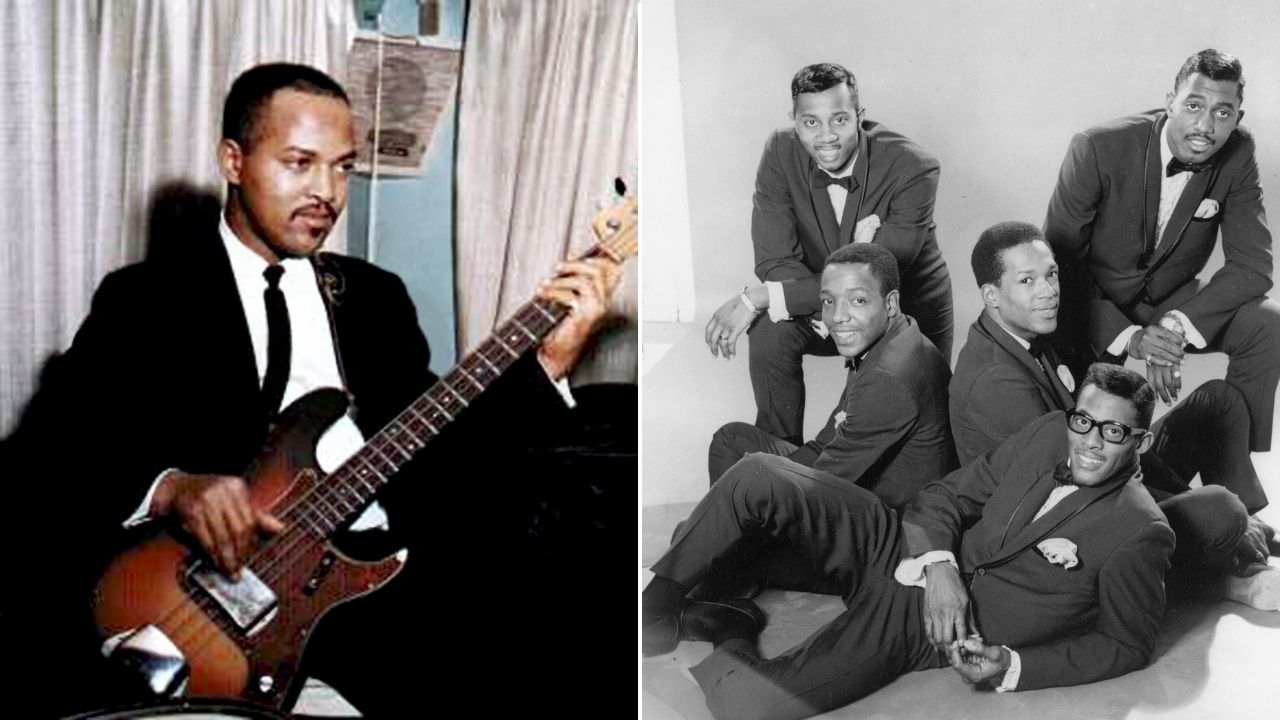Revisiting Prince's rollercoaster 1999 Bass Player interview: "Bass is primal, and it reminds me of a large posterior"
That time BP was summoned to Paisley Park for an audience with Prince Rogers Nelson
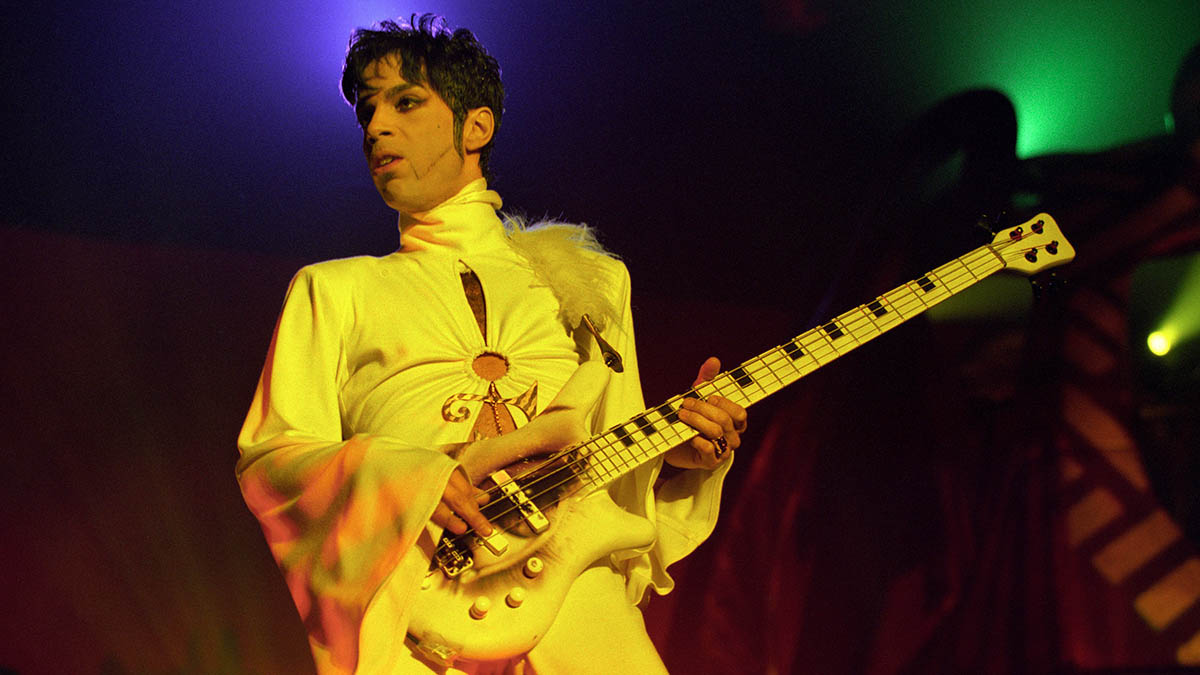
When Prince died on April 21, 2016 at the age of only 57, the world was stunned. This prolific, clean-living, supremely creative mind had apparently succumbed to an overdose of the painkiller fentanyl, many years before his time.
In the music-making community, we were deprived of the talents of a multi-instrumentalist and composer without parallel. In the specific tribe of bass players, we lost a musician whose grasp of groove and economy made him one of the finest of his generation.
Most of us in the press never met Prince, and regret that fact. He didn’t exactly make himself widely accessible to us, preferring to maintain a mystique about his personality and private life that endures to this day. When he did allow interviewers into his private sanctum, Paisley Park Studios in Minneapolis, they tended to walk away speechless, having spent time with a man who was arguably not quite of this world.
One of these privileged few was Bass Player’s Karl Coryat, whose story is reproduced in full below. Published as His Highness Gets Down! in November 1999, Coryat’s story was a milestone for this magazine, emphasizing BP’s authority in what was then essentially a field of one. Notice that Prince wasn’t calling himself by his given name at the time, making it tricky for anyone to actually address him: he permitted only ‘The Artist’ as a temporary name while he went through a legal battle with his then-record company.
Respect to Karl for rising to the challenge: could you have pulled this interview off?
It started out simply enough. The Artist was coming out with a new record, his people told us, called Rave Un2 The Joy Fantastic. Did we want to come to Minneapolis and do a story on him?
The Artist? Is he Bass Player material? Yes, he is. The man can play every instrument sickeningly well, bass certainly being no exception. A listen to any of his early-'80s LPs, on which he played nearly all the parts, bears this out. Being an old Prince fan myself – who still can’t quite cop the vibe of his disarmingly simple Let’s Work – I jumped at the chance.
All the latest guitar news, interviews, lessons, reviews, deals and more, direct to your inbox!
There was a small catch: The Artist doesn’t allow his interviews to be tape recorded. Perhaps something about losing domain over the sounds he creates. Would he allow me to bring along a stenographer? Apparently, no problem.
Several months later I’m in the foyer of Paisley Park, The Artist’s decade-old recording/performance complex just outside the Twin Cities. Accurately described by one journalist as a “musician’s Alice In Wonderland,” the plain-exterior place is an eye-feast inside – painted with countless bright colors, adorned by scores of platinum records and other awards, and outfitted with such necessities as a fitting room (for the two on-staff clothes designers), a faux diner (complete with menus), and a covey of unseen doves, cooing somewhere from 20-plus feet above.
While waiting for the Great and Powerful Oz to arrive, I chat with our hired stenographer – who, like many, was once a Prince fan but hasn’t followed his career since the late '80s. “Are there names or technical terms I should be familiar with?”
Not really – Larry Graham and “bass” are all that come to mind with the scary moment fast approaching. After reading numerous accounts of The Artist’s often combative demeanor toward journalists, I was still unsure how to keep the conversation steered toward music specifics and away from his usual fashion-mag spiel: God, the millennium, and record-label wars.
Finally The Artist appears – and seems a bit surprised to be meeting a stenographer. “Okay,” he hesitates with a slight smile, “but that hasn’t worked out too well in the past.” In a flash he commands her to stay put and whisks me off to a studio control room. Before I can even orient myself, the door slams behind me with an airtight thud.
Even the Cowardly Lion had Dorothy and friends to quiver with. And a place to run.
“I like to start by feeling out a person through conversation,” says His Highness as I scrawl whatever I can in my notebook. “When we talk in here, it’s your word against mine. These walls are completely soundproof. I prefer it this way.” Still hoping the real interview had yet to begin, I manage a few general questions about the nature of funk, causing The Artist to wax spiritual in his rich but slightly nasal timbre.
Finally he bursts forth with a delighted cackle and then pauses to think. “See that? Would words on a page capture my laugh, or the irony in what I just said? I’d much rather you write about the vibe of our conversation, rather than trying to get my exact words so people can analyze them to death. Why do you need to know exactly what I’m saying? How would that make for a better article?”
I’d much rather you write about the vibe of our conversation, rather than trying to get my exact words so people can analyze them to death. Why do you need to know exactly what I’m saying? How would that make for a better article?
Hoo-boy. Beginning to sweat, I try to explain I had planned a Q&A; in which I’d ask very specific, technical questions that would interest only other musicians – in a context where bassists would want to absorb every word. “Then ask me something,” he replies. “Ask me any question on that list of yours, and we’ll see what happens.”
Skipping my planned opening query, I quick-search the page for the most technical question I can find. “Okay. Do you have a tone recipe for great funk bass?” Without a pause: “Larry Graham. Larry Graham is my teacher.”
The Artist continues, veering quickly away from funk tone to God, to all of us being connected by the Spirit – but just as suddenly he claps his hands sharply, jumps up from his seat, and bellows a joyful noise. “Why do you need a stenographer to type out ‘Larry Graham’? That’s my answer to your question – it is all you need to know. Just write down ‘Larry Graham’ in your notebook!”
Time to find that man behind the curtain. The Artist’s gaze shifts slightly sidelong.
“Why do you want a witness, anyway? This isn’t a deposition.” A pause. “Are you a spy?” he asks with a sly smile. “Who sent you here? What did you do before you worked for this magazine? Are you working for someone else? Did somebody put something in your ear?”
Resisting an urge to flee, I try to think of something – anything – to settle myself and keep the interview intact. “Okay. No stenographer then. But the least I can do is go out there and tell her she’s free to leave.”
“Fine,” says The Artist with a flick of his hand, turning toward the massive “I’ll be right here.” When I return less than a minute later, he’s singing into a mic poised over the board. “There,” he purrs as I sit back down, hoping some color is returning to my face. “Now we can have a conversation.”
Once I had been paisley-whipped into shape, things went much smoother. It seemed no matter what I asked, the conversation turned to either God, Larry Graham, or both – The Artist freely admitting he modeled his bass style after Graham’s.
Prince first briefly met the slap pioneer at a Warner Bros. company picnic in 1978, by which time Larry had moved on from Sly & The Family Stone and was a star in his own right fronting Graham Central Station. The two met again a few years later, this time at a Nashville gig.
“Larry’s wife came up to him and pulled an effects box and cord out of her purse,” The Artist remembers warmly. “Now that’s love.” But Graham and the man he calls “Little Brother” didn’t develop a real relationship until the '90s – “relationship” perhaps being an inadequate description.
“Once Larry taught me The Truth,” says The Artist, “everything changed. My agoraphobia went away. I used to have nightmares about going to the mall, with everyone looking at me strange. No more.” The couple forged an ocean-deep spiritual connection – The Artist is a Seventh Day Adventist, Graham a Jehovah’s Witness. “I mean, Larry still goes around knocking on doors telling people The Truth. You don’t see me doing that!”
The Artist invited his “older brother” to Minneapolis, set him up with a house of his own, and welcomed him into the Paisley Park family. Before long Graham was playing with The Artist’s band New Power Generation and feasting Graham Central Station on Paisley’s incredible rehearsal and studio facilities. And ever since, after years of always picking up the bass for at least a few numbers per set, The Artist has hardly touched the instrument onstage.
“I can’t even physically reach for it anymore,” he laughs. Why? “I don’t know. I hope it’s out of respect for Larry, and not because I feel inadequate compared to him.”
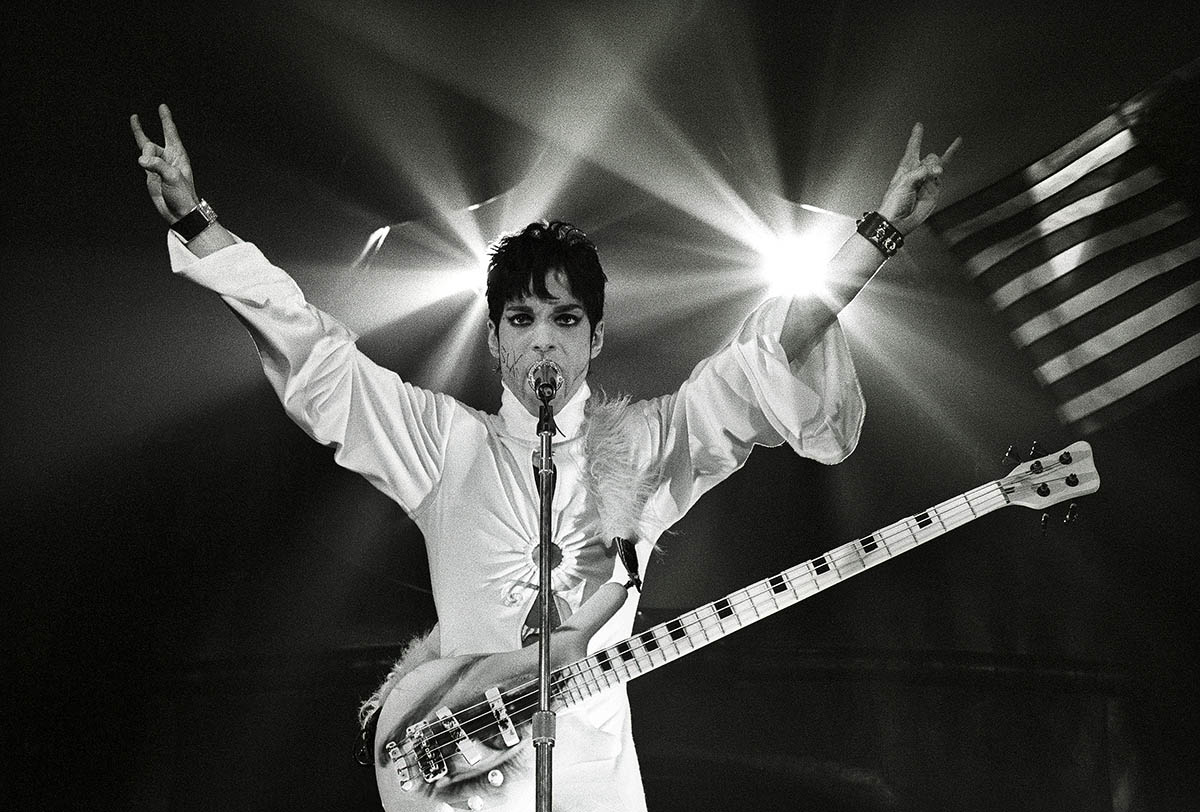
The night before our interview, New Power Generation and GCS co-headlined the last night of the Mill City Music Festival, a kind of Woodstock-in-a-parking-lot in Minneapolis’s warehouse district. The Artist’s performance was as energetic as any '80s Prince show, the only down moments coming with his between-song proselytizing and boasting.
Space is what it’s all about. I’m always telling people in rehearsal you’ve got to shut up once in a while
“People say to me, ‘Congratulations on your new [record] deal.’ But they ought to go find the president of the record company and congratulate him!” Years ago that would have been a sure cheer line – but on this night the mostly thirty-something crowd stood reserved, waiting for the next Let’s Go Crazy or U Got The Look sprinkled among the newer, unfamiliar tunes. Later The Artist reclined on a riser and pouted, “You might love Larry Graham, and you might love Morris Day – but you don’t love me!”
Yet The Artist has plenty to say about the dangers of ego in a musical context. “My first bass player was Andre Cymone,” he remembers, “and Andre’s ego always got in the way of his playing. He always played on top of the beat, and I’m convinced that was just because he wanted to be heard.
“Andre and I would fight every night, because I was always trying to get him to sound like Larry Graham. Larry’s happy just going [mimics thumping open-string quarter-notes] – he’s not interested in showing off. When you’re showing off it means you aren’t listening.”
The Artist shifts gears to describe a present-day rehearsal and grows excited again. “Space!” he bellows. “Space is what it’s all about. I’m always telling people in rehearsal you’ve got to shut up once in a while. Solo spotlights are fun and everything, but you’ve got to make some music people want to hear. You can listen to one groove all night, but if everyone’s playing all over the place all night and not hearing each other, ain’t nobody gonna want to listen.”
The Artist cues up a rough mix of a tune slated for Rave Un2 The Joy Fantastic. Hands flying over the board, he solos the drums and bass, which he played on Graham’s Moon four-string.
“Hear that? That’s the bass sound. I just turn it up full,” he says, pantomiming diming all the knobs at once with the edge of a hand. Meanwhile, the old Prince bass feel is right there, ghost-notes and vibrato laden with greasy funk.
“This is one seriously funky record,” he adds as he hits stop after only a few bars. “One of the funkiest of recent years. There’s no good funk happening these days. I’m still waiting for George Clinton to do something.”
The Artist first picked up bass years after he began playing guitar in 1975 – which, in turn, was years after he started playing the family piano.
“Bass was a necessity,” he confesses. “I needed it to make my first record.” Already a solid drummer, he translated his rhythmic chops to the bass, and everything fell into place fairly quickly. “That’s the thing about playing both bass and drums – the parts just lock together. Lenny Kravitz is the same way. If you solo his drum part on Are You Gonna Go My Way, it sounds like, hey – he ain’t that good. But put everything on top and it comes together. He just gets high on the funk.”
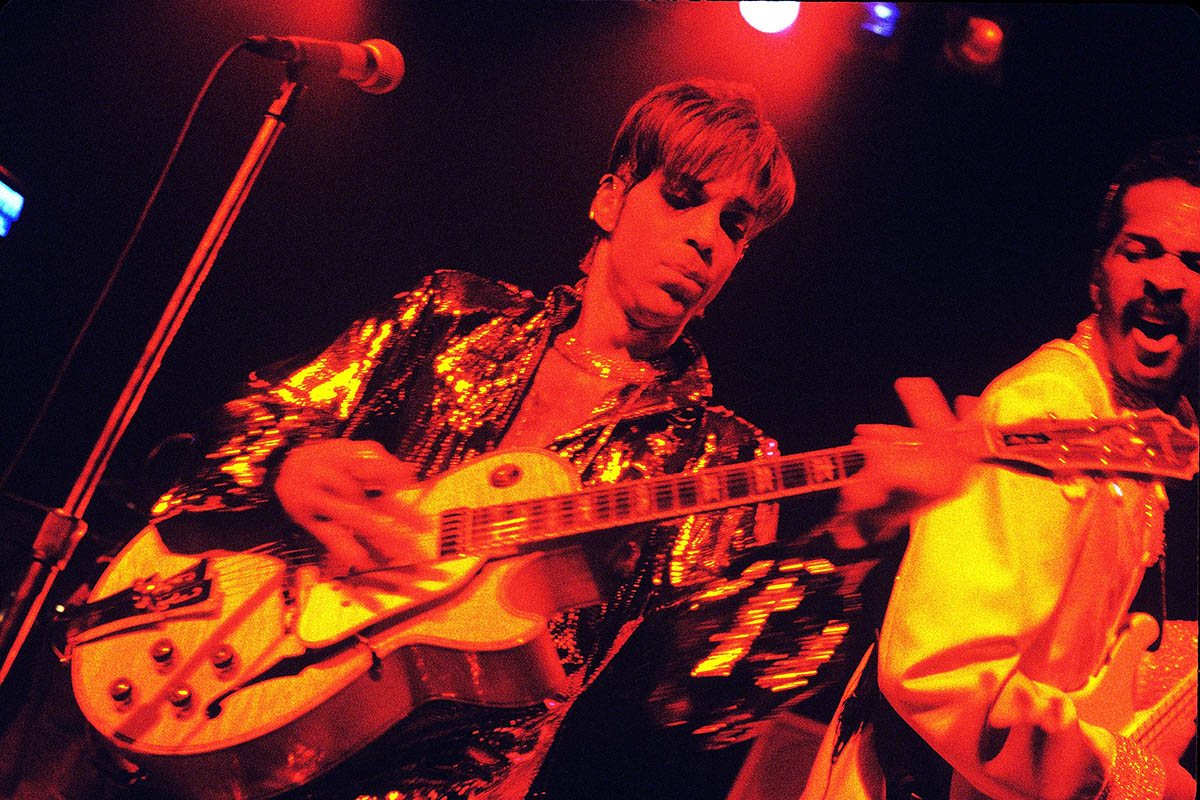
How can a bassist achieve that kind of lock with a live drummer? “I’ll tell you how Larry Graham does it: Through his relationship with God. Bootsy plays a little behind the beat – the way Mavis Staples sings – but Larry makes the drummer get with him. If he wants to he can stand up there and go [mimics 16th-note slap line] all night long and never break a sweat.”
Bass is primal, and it reminds me of a large posterior – but both spirituality and sexuality originate higher up in the body
Like the whirling dervishes of Sufi tradition? Exactly. But isn’t it possible to create music as deep as Graham’s without drawing inspiration from a higher power? “No, it isn’t. All things come from God and return to God. I wouldn’t say it necessarily needs to come from a higher place – but it does need to come from another place.”
The Artist is less known for bass than for the controversial eroticism of such early songs as Head, Do Me Baby, and Darling Nikki. Yet it sees many of his more lurid lyrics are backed by bass-heavy arrangements. Is there a connection between the two? “I’ve never thought about that,” he muses with a smile. “But no, there isn’t. Bass is primal, and it reminds me of a large posterior – but both spirituality and sexuality originate higher up in the body. I see both as angelic.”
The Artist’s all-time biggest hit, When Doves Cry, is most distinctive because of its lack of a bassline. The oft-repeated story is that the song had one, but it was pulled at the last minute.
“They were almost done editing the movie,” he explains, referring to his big-screen debut in Purple Rain. “It was the last song to be mixed, and it just wasn’t sounding right.” Prince was sitting with his head on the console listening to a rough mix when one of his singers, Jill Jones, walked in and asked what was wrong.
“It was just sounding too conventional, like every other song with drums and bass and keyboards. So I said, ‘If I could have it my way it would sound like this,’ and I pulled the bass out of the mix. She said, ‘Why don’t you have it your way?’” From the beginning Prince had an inkling the tune would be better bass-free, even though he hated to see the part go.
“Sometimes your brain kind of splits in two – your ego tells you one thing, and the rest of you tells you something else. You have to go with what you know is right.”
So bass can work against a song then? “Not necessarily. When Doves Cry does have bass in it – the bass is in the kick drum. It’s the same with Kiss: the bass is in the tone of the reverb on the kick. Bass is a lot more than that instrument over there. Bass to me means B-A-S-E. B-A-S-S is a fish.”
Prince’s first four albums were basically one-man efforts, with a few guest spots (though he kept all bass duties to himself). One of the most prolific artists in rock history, he also wrote, produced, and recorded for others – most notably fellow Minneapolis band The Time. In fact he performed nearly all the instrumental parts on The Time’s first two records, choosing to take only a production credit under the pseudonym Jamie Starr (which he also used for vocal and engineering credits on two of his own records).
“I was just getting tired of seeing my name,” he explains. “If you give away an idea, you still own that idea. In fact, giving it away strengthens it. Why do people feel they have to take credit for everything they do? Ego – that’s the only reason.”
When Doves Cry does have bass in it – the bass is in the kick drum. It’s the same with Kiss: the bass is in the tone of the reverb on the kick
He adopted yet another pre-symbol nom de plume, Camille, for “female” sped-up vocal parts. Prince had begun performing in women’s undergarments as early as 1979. His opening slot on a Rolling Stones tour, where he was pelted with garbage by disco-hating hooligans, is now part of rock legend.
“Don’t say that was because of me,” he admonishes, wagging a finger. “That was the audience doing that. I’m sure wearing underwear and a trench coat didn’t help matters – but if you throw trash at anybody, it’s because you weren’t trained right at home.”
Starting with 1982’s 1999, Prince began crediting a band, the Revolution, on his recordings. Though he still played many of the parts, over the next few albums the Revolution played an increasingly important role. “I wanted community more than anything else. These days if I have Rhonda [Smith, formerly The Artist’s live bassist] play on something, she’ll bring in her Jaco influence, which is something I wouldn’t add if I played it myself. I did listen to Jaco – I love his Joni Mitchell stuff – but I never wanted to play like him.”
The Artist still raves about the original Revolution bassist, Brown Mark (who took over for Andre Cymone), calling him the tightest bass player next to Graham himself. The latest version of New Power Generation is The Artist’s most skilled band to date; in addition to Graham, the Mill City Music Festival performance included James Brown saxophonist Maceo Parker, who also has free rein over the Paisley Park facilities for his own projects. Of course, Graham fits seamlessly into New Power Generation – and you can be sure The Artist never needs to tell him to play less and listen more.
The interview is winding down. With most of my questions answered (or at least chewed up and spit out), I pose another: of all the basslines you’ve created and played over the years, which stands out the most? As if he’s answered the query in every interview, he instantly volleys back, 777-9311 (The Time’s What Time Is It?).
Why? “Simple: Because nobody can play that line like I can. It’s like Hair [1974’s Graham Central Station], or Stanley Clarke’s Lopsy Lu – nobody can play that part better than Larry.”
I mention I was glad to hear him dig up Let’s Work for the previous night’s show “Hmmm… that might be a tie with 777.” The Artist gets up and heads over to the bass sitting in the corner but then waves a hand at it. “Oh, five-string – a mutant animal.” I start to scribble down the quote. “Don’t print that! People will say I don’t like the five-string because I can’t play it. We do have to keep an open mind to things. We need to be open to evolution.”
The Artist picks up a phone receiver and – without dialing – summons Hans-Martin Buff, his engineer, who fetches Graham’s white Moon bass. “Now imagine me teaching Larry Graham how to play this,” he scoffs as he plugs into the board and lays into the Let’s Work line. With no rhythm track, his feel isn’t quite as slinky as on record, but all the elements are there – subtle ghost-notes, vibrato, funky push-and-pull.
Suddenly he stops and hands me the bass. What? “Let’s see what you can do,” he says. (Sure am glad I’m not a spy.) As I grab the neck, he snatches my notebook and crosses his legs. “Now I’m gonna ask you some questions,” he toys. Stalling, I inquire about the XLR jack on the upper horn.
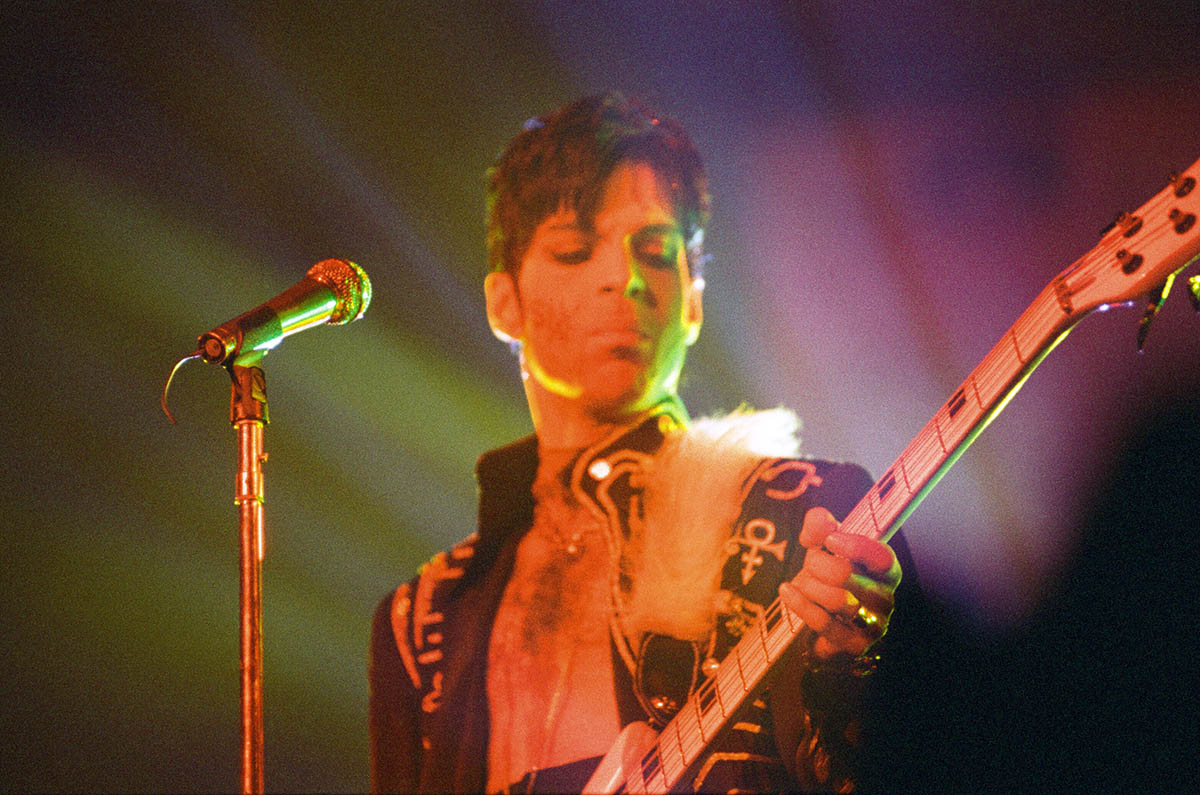
“For his mic,” he says, as if I needed to ask. I tentatively try out a generic finger-funk line in A. (I am not going to slap in front of the Let’s Work guy.) “That’s the sound, isn’t it?” asks The Artist. The tone is indeed perfect, but aside from the very low action and super-zingy strings, there’s nothing terribly magical about the instrument’s feel.
And of course it sounds like me coming out of the monitors, not Graham. “Do you ever practice?” I ask, handing back the bass. “Do you get rusty when you don’t play for a while?” “No,” he sighs, almost bored. “Playing is like breathing now.”
We get up and start to move to the door. “I was a little worried there at the beginning,” he says. “I told you you’d do fine.” And I’m out of there – but not before one last awkward moment as I shake his hand, unsure how to address him. “It was very interesting. Thank you. Um, yeah – thanks.”
Karl Coryat was Deputy Editor of Bass Player magazine in the 1990s. In the 2000s, he wrote two music books: Guerrilla Home Recording and The Frustrated Songwriter’s Handbook, the latter with Nicholas Dobson. In 1996, he was a two-day champion on the television game show Jeopardy!. He works as a comedian and musician under the pseudonyms Edward (or Eddie) Current.


